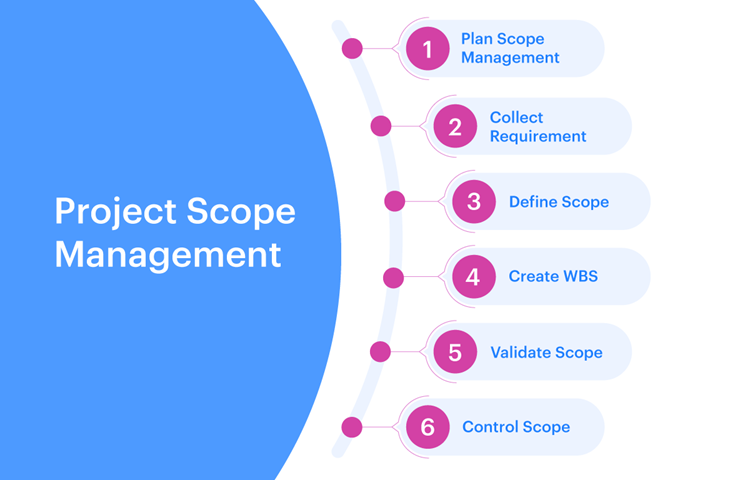In the dynamic landscape of project management, ensuring successful project delivery is a multifaceted endeavor. One of the pivotal elements in this journey is Project Scope Management. In this comprehensive guide, we delve into the intricacies of project scope, its management, and why it stands as a cornerstone for project success.
Understanding Project Scope
Defining the Terrain: What is Project Scope?
Project scope serves as the boundary delineating the extent and parameters of a project. It encompasses all the work, deliverables, features, and functionalities that contribute to achieving the project's objectives. The clarity and precision with which project scope is defined set the stage for seamless project execution.
The Significance of Robust Project Scope Definition
Accurate project scope definition is akin to crafting a roadmap for success. It not only aligns the team's efforts but also provides stakeholders with a clear understanding of what to expect. A well-defined project scope mitigates the risk of scope creep, ensuring that the project stays on track and within predefined boundaries.
The Four Pillars of Project Scope Management
1. Project Initiation
At the genesis of a project, the groundwork for successful scope management is laid. It involves the identification of project stakeholders, objectives, and high-level requirements. Thorough stakeholder engagement during this phase ensures that diverse perspectives are considered, setting the stage for a comprehensive scope definition.
2. Scope Planning
Crafting a robust plan is paramount to project success. During the scope planning phase, the project team collaboratively defines the detailed project scope, including deliverables, acceptance criteria, constraints, and assumptions. A meticulous scope planning process establishes a solid foundation for the subsequent phases, leaving little room for ambiguity.
3. Scope Execution
With the plan in place, the project moves into the execution phase. Here, effective communication and collaboration are imperative. Clear communication channels ensure that all team members understand their roles and responsibilities within the defined scope. This phase demands a vigilant approach to prevent any deviations from the established boundaries.
4. Scope Monitoring and Control
Vigilance extends into the monitoring and control phase, where project managers track, review, and regulate project scope. Regular progress assessments ensure that the project stays aligned with its objectives. Should any deviations be identified, prompt corrective actions are taken to maintain project integrity.
The Nexus Between Project Scope and Project Success
Avoiding Pitfalls: The Impact of Scope Creep
Scope creep, the insidious expansion of project scope beyond its initial definition, poses a significant threat to project success. Implementing robust change control processes is crucial in mitigating scope creep. This involves a systematic evaluation of proposed changes, their impact on the project, and obtaining stakeholder approval before implementation.
Enhancing Stakeholder Satisfaction
A well-managed project scope directly contributes to stakeholder satisfaction. Transparency in scope management fosters trust among stakeholders, as they witness a project that adheres to its commitments. Meeting or exceeding stakeholder expectations is contingent upon diligent scope management throughout the project lifecycle.
Tools of the Trade: Project Scope Management Techniques
Work Breakdown Structure (WBS)
The Work Breakdown Structure is a visual representation that dissects the project into manageable components. Developing a comprehensive WBS aids in understanding the hierarchical structure of deliverables, fostering a more granular approach to scope management.
Requirements Traceability Matrix (RTM)
The RTM establishes a traceable link between project requirements and deliverables. Maintaining an up-to-date RTM enables project managers to monitor the progress of each requirement, ensuring that no aspect of the project scope is overlooked.
Conclusion
In the labyrinth of project management, Project Scope Management emerges as the guiding light. A well-defined and meticulously managed project scope is the bedrock of successful project delivery, shielding against the myriad challenges that may arise. By embracing the pillars of initiation, planning, execution, and monitoring, coupled with effective tools like WBS and RTM, project managers can navigate the complex terrain of project scope with finesse.





0 comments:
Post a Comment